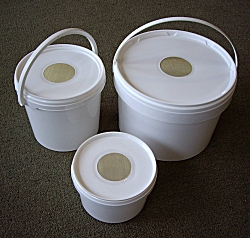Rosti
Drone Bee
- Joined
- Jul 29, 2009
- Messages
- 1,755
- Reaction score
- 14
- Location
- North Yorks, UK
- Hive Type
- 14x12
- Number of Hives
- 4
On the basis that I need some bigger feeders than I have for autumn use, I have a router and I haven't been to casualty for some time, I thought I would build some. Seen some great plans around. Quite like the diagonal Miller feeder http://website.lineone.net/~dave.cushman/diagmiller.html. If you were building what design would you go for ... and do you know where I could get plans? Thanks, Rosti


















































 .
.